Choosing the right large dog breed for your family is an important decision that requires careful consideration. These gentle giants can bring immense joy, loyalty, and companionship to your household. In this comprehensive guide, we'll explore the top 10 large dog breeds that are well-suited for families, discussing their unique characteristics, care requirements, and why they make excellent family pets.
Top 10 Large Dog Breeds for Families
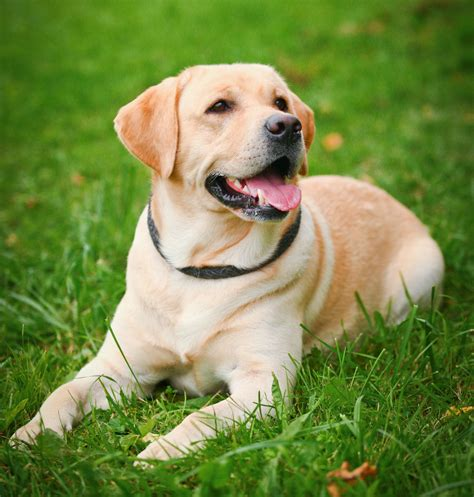
1. Labrador Retriever
Labrador Retrievers consistently rank as one of America's most popular dog breeds, and for good reason. These friendly, outgoing dogs are known for their gentle nature and patience with children.
History: Originally bred as fishing dogs in Newfoundland, Labs were later refined in England as hunting companions.
Physical Characteristics:
- Weight: 55-80 lbs
- Height: 21.5-24.5 inches
- Coat: Short, dense, water-resistant double coat
- Colors: Black, yellow, chocolate
Temperament: Friendly, outgoing, and high-energy
Exercise Needs: High; requires daily walks and play sessions
Grooming: Moderate; regular brushing and occasional baths
Family Suitability: Excellent; great with children and other pets
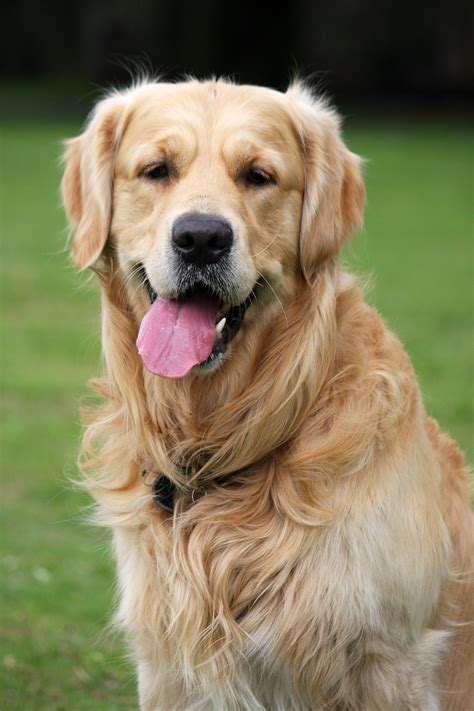
2. Golden Retriever
Golden Retrievers are renowned for their friendly demeanor and intelligence, making them ideal family companions.
History: Developed in Scotland in the mid-19th century as hunting dogs
Physical Characteristics:
- Weight: 55-75 lbs
- Height: 21.5-24 inches
- Coat: Dense, water-repellent double coat
- Colors: Various shades of gold
Temperament: Intelligent, friendly, and devoted
Exercise Needs: High; enjoys swimming, fetching, and long walks
Grooming: Moderate to high; regular brushing required
Family Suitability: Excellent; patient and gentle with children
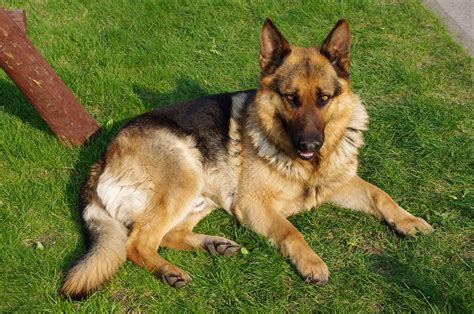
3. German Shepherd
German Shepherds are known for their loyalty, intelligence, and protective nature, making them excellent family guardians.
History: Originated in Germany in the late 19th century as herding dogs
Physical Characteristics:
- Weight: 50-90 lbs
- Height: 22-26 inches
- Coat: Double coat with medium-length outer coat
- Colors: Various, including black and tan, sable, and all-black
Temperament: Confident, courageous, and smart
Exercise Needs: High; requires both physical and mental stimulation
Grooming: Moderate; regular brushing needed, especially during shedding seasons
Family Suitability: Good; protective of family members, but early socialization is important
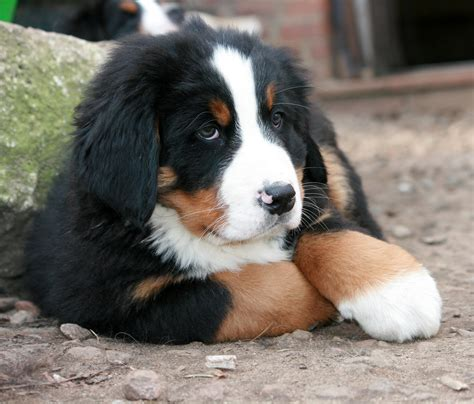
4. Bernese Mountain Dog
Bernese Mountain Dogs are gentle giants known for their calm demeanor and affectionate nature.
History: Originated in the Swiss Alps as farm dogs and draft animals
Physical Characteristics:
- Weight: 70-115 lbs
- Height: 23-27.5 inches
- Coat: Thick, long double coat
- Colors: Tricolor (black, white, and rust)
Temperament: Good-natured, calm, and strong
Exercise Needs: Moderate; enjoys walks and outdoor activities
Grooming: High; regular brushing required to prevent matting
Family Suitability: Excellent; patient and gentle with children
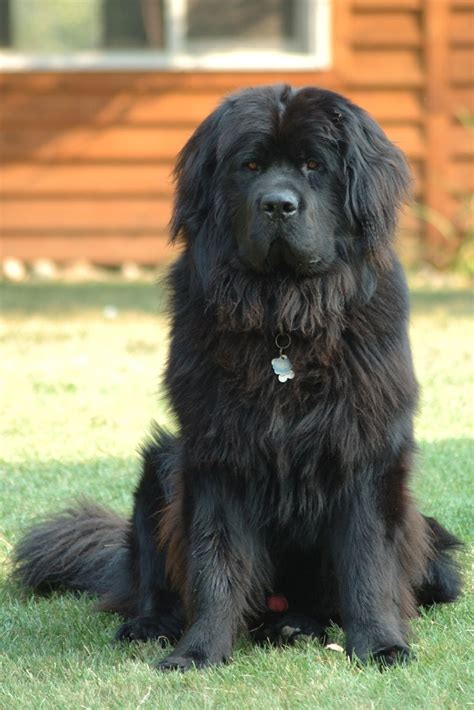
5. Newfoundland
Newfoundlands, often called "Newfies," are known for their sweet disposition and natural lifesaving instincts.
History: Originated in Newfoundland, Canada, as working dogs for fishermen
Physical Characteristics:
- Weight: 100-150 lbs
- Height: 26-28 inches
- Coat: Thick, water-resistant double coat
- Colors: Black, brown, gray, or black and white
Temperament: Sweet, patient, and devoted
Exercise Needs: Moderate; enjoys swimming and moderate walks
Grooming: High; regular brushing and occasional trimming needed
Family Suitability: Excellent; known as "nanny dogs" for their gentleness with children
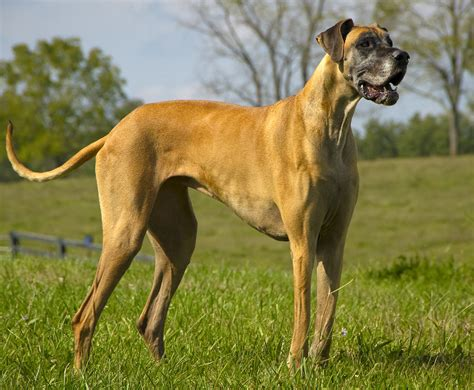
6. Great Dane
Great Danes, despite their imposing size, are often referred to as "gentle giants" due to their friendly nature.
History: Originated in Germany as boar hunters
Physical Characteristics:
- Weight: 110-175 lbs
- Height: 28-32 inches
- Coat: Short, smooth coat
- Colors: Various, including fawn, brindle, blue, black, harlequin, and mantle
Temperament: Friendly, patient, and dependable
Exercise Needs: Moderate; daily walks and play sessions
Grooming: Low; occasional brushing and bathing
Family Suitability: Good; gentle with children but may accidentally knock over small kids due to size
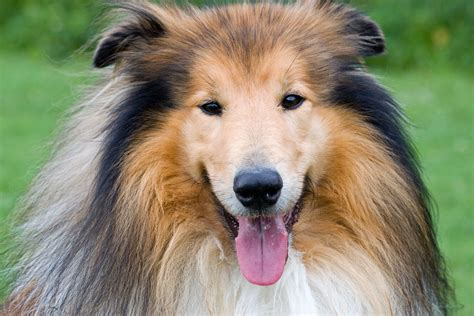
7. Collie
Collies, made famous by the "Lassie" series, are known for their loyalty and intelligence.
History: Originated in Scotland as herding dogs
Physical Characteristics:
- Weight: 50-75 lbs
- Height: 22-26 inches
- Coat: Long, dense outer coat with soft undercoat
- Colors: Sable and white, tri-color, blue merle
Temperament: Intelligent, loyal, and gentle
Exercise Needs: Moderate; enjoys walks and play sessions
Grooming: High; regular brushing required to prevent matting
Family Suitability: Excellent; protective and patient with children
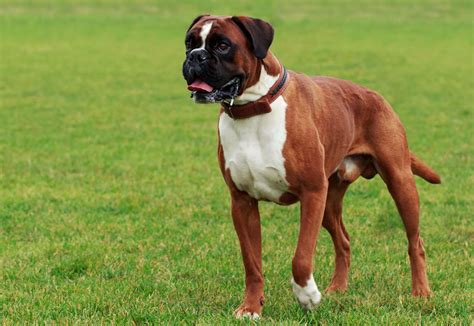
8. Boxer
Boxers are playful, energetic dogs that form strong bonds with their families.
History: Developed in Germany in the late 19th century as hunting and guard dogs
Physical Characteristics:
- Weight: 50-80 lbs
- Height: 21.5-25 inches
- Coat: Short, smooth coat
- Colors: Fawn or brindle, often with white markings
Temperament: Playful, energetic, and protective
Exercise Needs: High; requires daily exercise and play
Grooming: Low; occasional brushing and bathing
Family Suitability: Good; patient with children but may be too energetic for very young kids

9. Irish Setter
Irish Setters are known for their beautiful red coats and playful, affectionate nature.
History: Originated in Ireland as bird hunting dogs
Physical Characteristics:
- Weight: 60-70 lbs
- Height: 25-27 inches
- Coat: Long, silky coat
- Colors: Rich mahogany red or chestnut
Temperament: Outgoing, sweet-natured, and energetic
Exercise Needs: High; requires plenty of exercise and mental stimulation
Grooming: High; regular brushing and occasional trimming needed
Family Suitability: Good; loves children but may be too energetic for very young kids
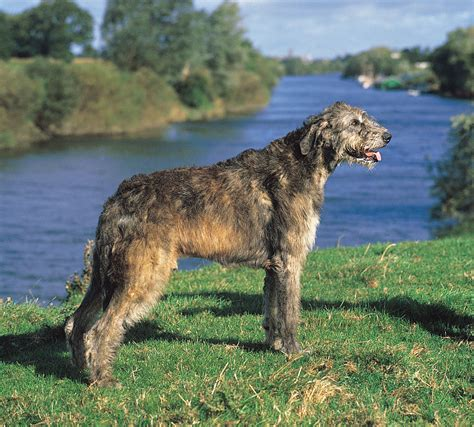
10. Irish Wolfhound
Irish Wolfhounds are the tallest of all dog breeds, known for their gentle and patient nature.
History: Ancient breed from Ireland, originally used for hunting wolves
Physical Characteristics:
- Weight: 105-180 lbs
- Height: 30-35 inches
- Coat: Rough, medium-length coat
- Colors: Various, including gray, brindle, red, black, and white
Temperament: Gentle, patient, and courageous
Exercise Needs: Moderate; daily walks and play sessions
Grooming: Moderate; regular brushing and occasional hand-stripping
Family Suitability: Good; gentle with children but may be too large for very young kids
Comparison Table of Top 10 Large Dog Breeds for Families
| Breed | Weight (lbs) | Height (inches) | Exercise Needs | Grooming Needs | Family Suitability |
|---|---|---|---|---|---|
| Labrador Retriever | 55-80 | 21.5-24.5 | High | Moderate | Excellent |
| Golden Retriever | 55-75 | 21.5-24 | High | Moderate to High | Excellent |
| German Shepherd | 50-90 | 22-26 | High | Moderate | Good |
| Bernese Mountain Dog | 70-115 | 23-27.5 | Moderate | High | Excellent |
| Newfoundland | 100-150 | 26-28 | Moderate | High | Excellent |
| Great Dane | 110-175 | 28-32 | Moderate | Low | Good |
| Collie | 50-75 | 22-26 | Moderate | High | Excellent |
| Boxer | 50-80 | 21.5-25 | High | Low | Good |
| Irish Setter | 60-70 | 25-27 | High | High | Good |
| Irish Wolfhound | 105-180 | 30-35 | Moderate | Moderate | Good |
Factors to Consider When Choosing a Large Family Dog
When selecting a large dog breed for your family, consider the following factors:
-
Space: Ensure you have enough room for a large dog to move comfortably.
-
Exercise needs: Match the dog's energy level with your family's lifestyle.
-
Grooming requirements: Consider the time and cost associated with grooming.
-
Temperament: Choose a breed that aligns with your family's personality and needs.
-
Health concerns: Research breed-specific health issues and associated costs.
-
Training: Consider the breed's trainability and your commitment to obedience training.
-
Lifespan: Large breeds often have shorter lifespans than smaller dogs.
-
Cost: Factor in food, veterinary care, and potential pet insurance expenses.
FAQs About Large Family Dogs
-
Q: Are large dogs good with children? A: Many large dog breeds are excellent with children, but early socialization and training are crucial.
-
Q: How much exercise do large dogs need? A: Exercise needs vary by breed, but most large dogs require at least 30-60 minutes of daily activity.
-
Q: Are large dogs more expensive to care for? A: Generally, yes. Large dogs consume more food and may have higher veterinary costs.
-
Q: Can large dogs live in apartments? A: Some large breeds can adapt to apartment living, but most require ample space and regular exercise.
-
Q: How long do large dog breeds typically live? A: Large dog breeds generally have a lifespan of 8-12 years, though this can vary by breed and individual health.
Conclusion
Choosing the right large dog breed for your family is a significant decision that requires careful consideration of various factors. Each of the top 10 large dog breeds for families discussed in this article has its unique characteristics, strengths, and care requirements. By matching your family's lifestyle and preferences with the right breed, you can ensure a harmonious and loving relationship with your new canine companion.
Remember that regardless of the breed you choose, proper training, socialization, and care are essential for raising a well-behaved and happy family dog. Consider enrolling in obedience classes offered by reputable organizations like the American Kennel Club (AKC) to establish a strong foundation for your dog's behavior and strengthen your bond.
Lastly, don't forget to factor in the importance of regular veterinary check-ups and consider pet insurance to help manage potential health costs. With the right preparation and care, a large family dog can bring years of joy, companionship, and unforgettable memories to your household.
Ready to welcome a large dog into your family? Research local breeders or rescue organizations specializing in your chosen breed. Remember to ask questions, meet the dog in person, and ensure you're prepared for the commitment before bringing your new furry family member home.
